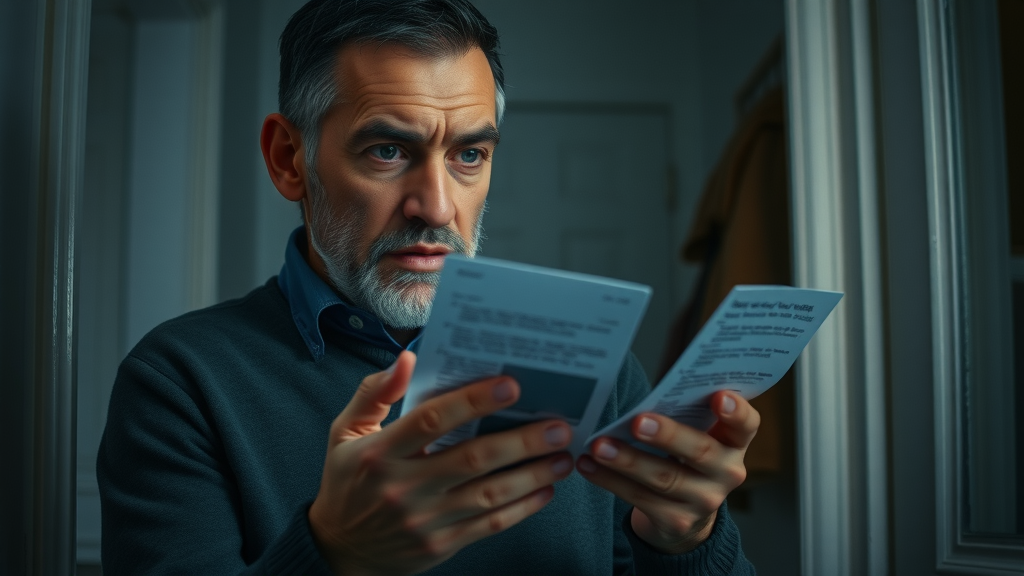Have you ever wondered if you’re reading enough—or the right things—before hiring a roofer or plumber for your home? Most homeowners believe checking a review or two is enough, but there’s much more that goes into making a well-informed decision. Before inviting roofing contractors or plumbers into your home, it pays to know what actually matters—and what signals trust and quality. In this comprehensive guide, we’ll shed light on what homeowners actually read before hiring a roofer or plumber, so you can move forward with confidence and peace of mind .
What Homeowners Actually Read Before Hiring a Roofer or Plumber: Decoding the Research Process
When setting out to hire a roofer or plumber, homeowners are no longer relying on simple word-of-mouth or quick web searches. They’re diving deep—searching for facts, comparing roofing companies and plumbing pros , and examining credentials before making a choice. They read about roof inspection services, look up licensing and insurance documents, and scrutinize multiple online reviews from both reputable third-party platforms and company websites.
This information-first approach means that homeowners want: assurance about workmanship warranty , detailed breakdowns of roof repair or plumbing job estimates, and a clear understanding of roof replacement processes. By reading thorough inspection reports and reviewing documented project histories, homeowners reduce risk and gain control over the outcome of their roof inspect or plumbing projects. For example, a homeowner may request references for roof repairs done in the last year or ask to see a gallery of completed roof and plumbing projects before signing a contract.
Are You Trusting the Right Roofing Contractor or Plumbing Expert?
Trust is at the center of the hiring process for both roofing and plumbing services. Homeowners today are sharper than ever, making sure a contractor’s promises are backed up by evidence. They scrutinize roofing contractor credentials, check if their phone number matches what is listed on professional directories, and even verify physical addresses to eliminate possible scams. Homeowners often contact past customers to confirm successful roofing jobs or prompt plumbing repairs, ensuring their chosen provider is a true professional roofer or plumber—one who adheres to building codes and industry standards. By comparing roofing companies and plumbers this way, homeowners find the balance between cost, reliability, and quality materials that makes all the difference in a home improvement project.

Understanding What Homeowners Actually Read Before Hiring a Roofer or Plumber: Key Facts and Motivation
- Signs of a legitimate roofing company or plumbing professional
- Importance of a thorough roof inspection and work history review
- Comparison between roofing contractors and plumbing companies: what matters most
- Common red flags and warning signs
What motivates homeowners to thoroughly vet roofing contractors and plumbers? It’s about security and value—an understanding that the wrong hire can result in damage, financial loss, or ongoing headaches. Smart homeowners learn to identify the difference between a fly-by-night operation and a credentialed, established provider by reading in-depth material about roofing material choices, shingle manufacturer warranties, roof inspection protocols, and proper documentation for plumbing work. Key facts help detect hidden issues in advance, from roof deck problems to plumbing code violations.
The urge to avoid costly mistakes leads homeowners to favor transparent contractors who supply clear documentation, comprehensive free roof inspections, and explicit details about warranties and timelines. Knowing what homeowners actually read before hiring a roofer or plumber ensures that the journey to a great roofing job or flawless plumbing upgrade starts with the right research—and the right provider.
What Drives Homeowners’ Decisions When Hiring for Roof Inspection or Plumbing Services
The decision to hire a roofer or plumber is usually triggered by visible signs of trouble—like a leaky roof or clogged drain—as well as by routine roof inspect or home maintenance schedules. Homeowners absorb information about roofing companies’ approach to roof repair , their compliance with building codes, and their willingness to stand by their work with a robust workmanship warranty. The research goes beyond just looking for the lowest bid—homeowners seek providers whose expertise delivers lasting value, safety, and curb appeal.
In many cases, what homeowners actually read before hiring any contractor is influenced by stories from fellow homeowners, online reviews, and guides outlining what to expect from an initial roof inspection or plumbing evaluation. These compelling testimonials and carefully crafted reports clarify which companies deliver consistent results, whether in roof replacement, plumbing upgrades, or emergency repairs.
Why Homeowners Insist on a Professional Roof Inspection or Licensed Plumber
Whether prompted by damage or a desire to prevent future problems, homeowners often insist on a professional roof inspection or licensed plumber because unqualified work can have serious—and expensive—consequences. A certified roofing contractor helps detect hidden leaks, evaluate the condition of the roof deck, and ensure all work meets current building codes. For plumbing, a licensed pro not only avoids permit headaches but also safeguards against water damage, mold, and violations that could lower property value or slow a home sale.
When reading about what homeowners actually read before hiring a roofer or plumber, it’s clear that reports, credentials, and visual proof (like job photos or shingle color samples) inspire trust and set apart top-tier providers. Homeowners want confidence, knowing that their chosen roofing company or plumber is accountable and prepared for every scenario.

Questions Homeowners Ask Before Hiring a Roofing Contractor or Plumbing Company
- Is the company licensed and insured?
- What is the reputation of this roofing company or plumber?
- Are previous customer reviews positive and detailed?
- What warranties or workmanship guarantees are offered?
“I never hire without reading both positive and negative reviews. It’s the best way to know what to expect,” – Experienced Homeowner
Roofing Contractor and Plumber Credentials: Credentials that Homeowners Actually Verify
One of the most important steps homeowners take is verifying credentials . Any reputable roofing company or plumber should provide clear proof of licensing, insurance, and industry experience. These non-negotiables protect both the homeowner and the contractor, reducing the risk of incomplete work, legal issues, or financial disputes.
Homeowners also confirm the authenticity of credentials by visiting state licensing boards, reading up on association memberships, and requesting certificates directly from the contractor before approving a roof inspection or plumbing project. If a provider hesitates or is unable to provide these documents, it’s a major red flag and a signal to look elsewhere.
Licensing, Insurance, and Experience: The Non-Negotiables
- State contractor’s license number for roofing and plumbing pros
- Proof of general liability and workers’ compensation insurance
- Years in business and completed roof inspections, roof replacements, and plumbing repairs

Certification Badges and Associations: Roofing and Plumbing Industry Trust Signals
Many top roofing contractors and plumbers display badges on their websites and estimates indicating membership in the Business Bureau , local trade organizations, and shingle manufacturers’ networks . These trust signals show an ongoing commitment to building codes and continued education—key indicators of professionalism.
Reading verified credentials and certifications shows that a homeowner is not just going through the motions but making choices based on best practices and proven standards in the roofing and plumbing industry.
“A professional roof inspection saved us thousands by catching a hidden leak. Credentials matter!” – Anonymous Homeowner
What’s in a Roof Inspection or Plumbing Evaluation Report? Homeowner Priorities
Modern homeowners demand transparency and thoroughness from roof inspection or plumbing evaluation reports. These documents help guide decisions, explain costs, and build trust between the homeowner and contractor. Understanding what these reports should include is a key part of what homeowners actually read before hiring a roofer or plumber.
Roof Inspection Reports: Transparency and Thoroughness Matter
- Detailed notes on roofing materials condition and necessary repairs
- Roof replacement recommendations based on material type and age
- Clear explanations of shingle manufacturer warranties
A well-prepared roof inspection report will clearly document any issues found with the existing roof , note weather-related wear, highlight compliance with building codes, and detail all recommended repairs or roof replacement needs. In addition to material conditions, the report should include shingle color suggestions for curb appeal and a summary of available roof warranties .
Plumbing Job Checklists: What Homeowners Want to See
- Assessment of plumbing system integrity
- Photos documenting the need for repairs or replacement
- Explanation of work required, cost breakdown, and warranty on labor
Likewise, a detailed plumbing evaluation lists all tested fixtures, pipe conditions, and code compliance issues. Homeowners expect clear recommendations, visuals showing plumber findings, and step-by-step plans for repair or replacement. Transparent reports, regardless of project size, help ensure there are no surprises after work begins or ends—a central reason why homeowners review them so closely.
| Report Element | Roofing Contractor | Plumber |
|---|---|---|
| License/Cert Verification | Yes | Yes |
| Detailed Written Estimates | Yes | Yes |
| Materials List | Yes | N/A |
| Warranty Details | Yes | Yes |
| Clean-up/Jobsite Standards | Yes | Yes |

Comparing Roofing Companies and Plumbing Companies: What Distinguishes the Best?
The difference between a mediocre and an exceptional roofing company or plumber comes down to more than pricing. Homeowners look for companies that value communication, publish their workmanship warranty terms in writing, and have a solid project gallery backed by positive reviews. Top contractors provide detailed information about roofing materials and highlight shingle manufacturer partnerships, demonstrating commitment to quality and longevity. The best also handle roof repair emergencies with the same care as large-scale roof replacement or plumbing renovations.
Beyond skills and materials, leading companies are often reviewed favorably for their transparency, ability to meet timelines, and willingness to fix any issues after the job is done. Homeowners frequently report that trusted companies follow through on every promise, from initial roof inspection to final clean-up, setting themselves apart as industry exemplars.
Customer Satisfaction: Homeowners' Key Indicator
Homeowners closely read online reviews to gauge a contractor’s customer service, attention to detail, and ability to resolve service concerns. Specific mentions of prompt communication, clean job sites, or follow-up calls after a roofing project or plumbing installation set great roofing and plumbing companies apart from the rest.
Companies that consistently earn positive remarks for both small roof repairs and major replacements give prospective clients greater peace of mind . Homeowners want to see roofing job outcomes that show superior execution, correct color matching on shingle color , and evidence that customer concerns were handled quickly and professionally.
Warranties and Workmanship: The Homeowner’s Safety Net
Workmanship warranty and clear warranty terms are crucial for homeowners. Top-tier roofing contractors and plumbers detail what is—and isn’t—covered, including timelines and procedures for resolving covered claims. Information about material warranty from top shingle manufacturers or plumbing suppliers helps reinforce a commitment to long-term satisfaction and trust between the provider and homeowner.
| Criteria | Roofing Contractor | Plumber |
|---|---|---|
| Workmanship Warranty | Yes | Yes |
| Timeliness | Reviewed by Client | Reviewed by Client |
| Material Origin (Shingle manufacturer) | Always Noted | N/A |

Spotting Red Flags: What Homeowners Actually Read Before Hiring a Roofer or Plumber
No matter how convincing the pitch, savvy homeowners know there are warning signs not to ignore when reviewing contractors. One red flag is a lack of business transparency—such as refusing to provide an address or direct phone number . Others include unclear warranty details, negative review patterns (for example, roof repair delays or incomplete plumbing jobs), and evasive answers about insurance or licensing.
Common Warning Signs and What to Avoid
- High-pressure sales tactics or lack of physical address
- Reluctance to provide license/insurance information
- Poor workmanship warranty or vague warranty terms
- Negative patterns in reviews (roof repair shortcuts, unfinished plumbing work)
In addition to these, homeowners are wary of contractors who demand large deposits before work starts or who avoid putting critical terms—like roof warranties or timetables—in writing. Always trust your instincts: if something feels off, or a company fails to answer basic questions about roof repairs , roof deck materials, or plumbing certifications, move on to another provider. Remember, a mistake made here can have lasting impacts on both your investment and the safety of your home.
“If they won’t show me a license or insurance certificate, I won’t even schedule a roof inspection.” – Scrupulous Homeowner

Top Resources Homeowners Use Before Hiring a Roofing Contractor or Plumber
- Company websites with project galleries and roof inspection certifications
- Verified third-party review platforms (BBB, Google, Angi)
- Local government or state contractor boards for verification of licensing
- Shingle manufacturer and plumbing supply brand partners
Before making the final hiring decision, homeowners visit a variety of authoritative sources. Reputable contractor websites feature galleries of finished work, roof inspection credentials, phone numbers, and warranty policies. Third-party platforms help confirm a company’s real-world reputation, while trade association or manufacturer listings prove ongoing industry engagement and support.

Video Guide: How Homeowners Research Before Hiring a Roofer or Plumber
Watch our step-by-step animated video visually showing a homeowner performing online research, checking credentials, comparing reviews, and requesting inspection quotes for roofers and plumbers.
Roof Inspect and Roof Inspection: How These Keywords Guide Homeowner Research
Terms like roof inspect and roof inspection are some of the most searched—and read—by homeowners trying to understand their options. These critical phases of hiring a roofing contractor prompt people to study inspection checklists, sample reports, warranty disclosures, and certifications associated with the contractor or the shingle manufacturer . They look up images of roof replacement projects, read about roofing materials , and learn which providers are authorized for specific brands.
Most-Searched Information for Roofing Contractor Selection
Homeowners want clear, simple answers—like what steps a professional roof inspection involves, how to identify a qualified roofer , and what makes a roofing job compliant with modern building code. They also search for galleries that show shingle color options and explore case studies that break down recent roof replacements from start to finish.
Common Misconceptions about Roofing Companies and Inspectors
- Assuming the cheapest price equals best value
- Neglecting to verify roofing contractor insurance
- Overlooking shingle manufacturer warranty details
Beware of common traps: the lowest price often signals shortcuts, not savings. Homeowners sometimes forget to ask for proof of insurance, not knowing this can leave them financially at risk. Lastly, failing to request shingle manufacturer warranty explanations could mean missing valuable protection on roofing materials—one of the most critical peace of mind factors for any large home investment.

Expert Video Analysis: Roof and Plumbing Company Trust Indicators
For those who want visual proof, seek out expert video walkthroughs that showcase trust signals—such as credentials, insurance certificates, and professional affiliations—when evaluating both roofing and plumbing contractors. Watching how seasoned inspectors point out best practices helps homeowners see exactly what to look for when reviewing a company’s offer or interviewing a contractor.
Breakdown of Roofing Contractor and Plumber Reviews: What Signals Trust?
Online reviews are one of the most powerful tools for homeowners. By reading about real customer experiences—especially those focused on roof repair , roof inspection , or major plumbing jobs—homeowners gain firsthand insight into what to expect from the companies they’re considering.
How to Evaluate Online Reviews for Roofing Companies and Plumbers
- Look for repeated issues or praise related to timeliness and communication
- Seek specificity: does the reviewer mention roof inspection, roof replacement, or plumbing services?
- How are complaints handled by the roofing company or plumber?
When sifting through reviews, homeowners pay attention to stories about work completed on schedule, contractors returning calls, and whether any post-job issues were resolved (or ignored). Specific mentions of roof deck repairs, successful roof replacement , and clear documentation support a contractor’s reputation.
The Power of Social Proof for Homeowners
Social proof comes from more than just reviews—it also includes recommendations from friends, neighbors, and local community groups. Homeowners who see and hear about positive outcomes from trusted sources feel more confident in their hiring decision and are more likely to share their own positive experiences. This community-driven validation is what further sets apart great roofing contractors and plumbers.

Professional Roof Contractors vs. Plumbing Contractors: Key Differences Homeowners Read Up On
While both roof and plumbing contractors may be vetted for many of the same qualities, homeowners quickly discover important differences when they read up on scope, specialization, and material options. Roofing contractors focus on roof inspect steps, roof repair methods, and intricate details like shingle color and manufacturer compatibility. In contrast, plumbers offer essential services around compliance with plumbing codes, pipe installation, and leak prevention, crucial for protecting the home’s foundation and interior.
Scope of Work and Specialization
- Roofing contractors: roof inspect, roofing material assessment, shingle color recommendations, roof replacement, roof repair
- Plumbers: pipe replacement, leak repairs, fixture installation, compliance with local codes
Understanding these specialties is key for homeowners evaluating bids, planning home improvement, or troubleshooting recurring issues. It’s important to hire a contractor whose experience and equipment match the complexity of the task at hand—be it a full roof replacement or an intricate plumbing reroute.
Understanding Material and Brand Choices
For both roofing and plumbing, material and brand selections directly impact quality, durability, and maintenance. Homeowners often educate themselves about preferred roofing materials and top shingle manufacturers —the same applies for plumbing fixtures and supply brand partners. Reading up on these details helps ensure compatibility, warranty support, and long-term value.
The Complete Homeowner Research Checklist Before Hiring a Roofer or Plumber
- Verify contractor license and insurance for both roofers and plumbers
- Insist on detailed, written roof inspection or plumbing evaluation report
- Review warranty terms—both workmanship and material
- Request and check recent references and completed project galleries
- Scrutinize both positive and negative online reviews
Video Walkthrough: Real Homeowner Experiences When Hiring Roofing Contractors or Plumbers
See real homeowners discuss their experiences—from researching credentials to reviewing work after completion—in our in-depth video walkthrough. Learn which strategies yielded the best results and how careful reading saved time and money.
People Also Ask About What Homeowners Actually Read Before Hiring a Roofer or Plumber
What to ask before hiring a roofer?
Always ask about the roofing contractor’s license, insurance coverage, previous roof inspection or roof replacement projects, details about the roof warranties offered, and whether the crew follows current building codes. Confirm how disputes or fixes are handled after the roofing job is complete.
How do you know if your roofing contractor is ripping you off?
Be wary of contractors who use high-pressure sales tactics, demand large upfront deposits, or refuse to show credentials and written estimates. Check multiple review sources for complaints about unfinished work, repeated repair issues, or hidden costs—these are common red flags of dishonest roofers.
How can you tell a good roofer?
A good roofer is properly licensed and insured, provides detailed roof inspection reports, has positive references, and offers a transparent workmanship warranty. Great roofers also have visible ties to respected shingle manufacturers and uphold high job site and communication standards.
How to tell if a roofer is legit?
Check state contractor boards for licensing, review insurance certificates, look up the business address, and read recent reviews. Legitimate roofers do not hesitate to provide documentation and maintain a consistent online and offline reputation.
Frequently Asked Questions: What Homeowners Actually Read Before Hiring a Roofer or Plumber
- Should I always get a roof inspection when hiring a roofing contractor?
- What questions should I ask about a plumbing company’s experience?
- How important is a workmanship warranty versus a material warranty for homeowners?
- Are there certifications I should insist on for a roofing contractor?
Should I always get a roof inspection when hiring a roofing contractor?
Yes, a roof inspection is critical for identifying any hidden issues, ensuring an accurate estimate, and fulfilling some warranty conditions. Always request a written, detailed report before agreeing to hire.
What questions should I ask about a plumbing company’s experience?
Ask about years in business, expertise with your specific type of plumbing repair, licensing status, insurance coverage, and sample reports of previous jobs. Experience with relevant building codes is also essential.
How important is a workmanship warranty versus a material warranty for homeowners?
Both are very important. A workmanship warranty covers labor errors, while a material warranty protects against defective products. Combined, they offer comprehensive protection for your investment.
Are there certifications I should insist on for a roofing contractor?
Yes, look for certifications from major shingle manufacturers and trade associations, along with licenses and proof of insurance. These credentials indicate ongoing commitment to industry best practices and up-to-date knowledge.
Summary: What Homeowners Actually Read Before Hiring a Roofer or Plumber
“Taking the time to read and research could save thousands and countless hours of stress. Never shortcut the process of hiring a roofer or plumber.” – Industry Expert
Careful reading and research equip you to hire the best roofing contractor or plumber. Always review credentials, inspection reports, warranties, and customer feedback, and insist on written details for every step of the process.
Take Action with Confidence: What Homeowners Actually Read Before Hiring a Roofer or Plumber Matters
Empower yourself before you sign any contract—verify documents, scrutinize reviews, and ask detailed questions. When you know what homeowners actually read before hiring a roofer or plumber, you transform your home project into a smart, low-risk investment. Now’s the time to apply what you’ve learned and protect your biggest asset with confidence!
When preparing to hire a roofer or plumber, homeowners often consult comprehensive guides to ensure they make informed decisions. For instance, the article “Choosing A Roofer: Florida Homeowners’ Guide” offers detailed advice on verifying credentials, assessing experience, and understanding material warranties. ( prsroofpro.com ) Similarly, “Hiring a Roofer: Essential Questions To Ask Before You Sign” provides a list of critical questions to pose to potential contractors, covering topics like licensing, insurance, and the roofing process. ( todayshomeowner.com ) These resources equip homeowners with the knowledge to select qualified professionals, ensuring quality workmanship and peace of mind.
 Add Row
Add Row  Add
Add 



Write A Comment